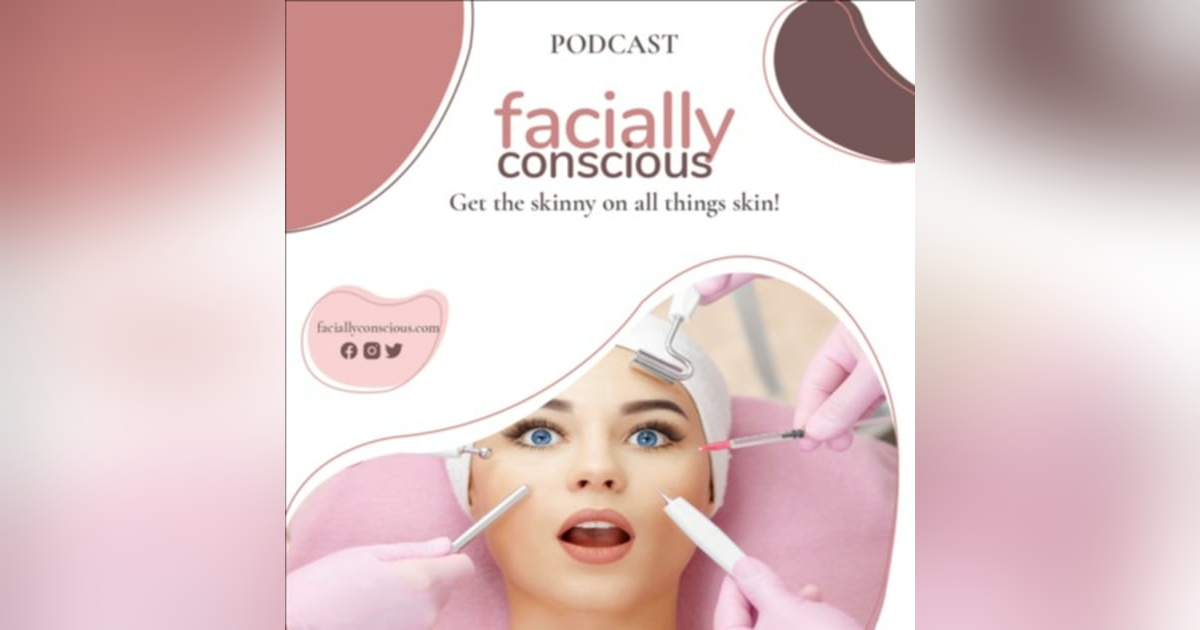Flushing & Blushing: Unpacking Rosacea Triggers and Calming Skincare Ingredients

Hey everyone, Trina, your friendly esthetician from the Facially Conscious podcast here! In this episode, Deep Dive: Flushing & Blushing Rosacea Triggers, Plus Skincare Ingredients That Calm Rosacea we dig into a topic many people struggle with: Rosacea. Rosacea is a tricky skin condition that brings on redness, inflammation, and sometimes, breakouts that mimic acne. It’s a complex condition, and one size certainly doesn’t fit all when it comes to managing it. I was joined by Dr. Vicki Rapaport, our dermatology expert, and Rebecca Gadberry, our dear cosmetic scientist, for a discussion filled with tips, triggers, and skincare ingredient dos and don’ts.
Let’s break down the highlights!
Understanding Rosacea Triggers
Rosacea triggers can vary widely, but there are common offenders that we covered in detail. A key takeaway? Triggers don’t impact everyone the same way, so it’s essential to listen to your skin and note what sets it off. Some of the major culprits include:
- Foods – Spicy foods often top the list for triggering redness. But if your skin doesn’t react, go ahead and indulge!
- Medications – Some drugs, including corticosteroids, certain asthma medications, and even NutraSweet, can cause flushing. Rebecca pointed out that medicines that increase blood flow or dilate blood vessels might trigger rosacea episodes, so you should continuously monitor your skin when starting new meds.
- Hormones – Menopause, birth control, and even hormone therapy can all spark rosacea in those prone to it. Dr. Vicki shared how hormonal changes can intensify symptoms, so it’s something to be mindful of.
The Beauty Products to Avoid
Our talk didn’t stop with triggers—you know us! We dove into specific skincare ingredients that can aggravate rosacea. Here’s the lowdown:
Benzoyl Peroxide: This acne-fighting ingredient is generally too harsh for rosacea, except in its newer, microencapsulated form (like Epsolay), designed specifically for rosacea’s acne-like symptoms.
- Retinoids: Retinol is a classic skincare staple, but it can be irritating. Rebecca recommends bakuchiol as a gentler, plant-based alternative.
Exfoliants: Avoid scrubs and strong acids like glycolic acid, which can irritate rosacea-prone skin. Rebecca prefers mandelic acid, which is milder and has antimicrobial benefits.
- Alcohols: Be cautious of volatile alcohols, like ethyl and isopropyl alcohol, which can sting and cause flare-ups. Rebecca gave a thumbs-up to gentler alcohols like cetyl and stearyl, which don’t irritate.
Tips for Calming Rosacea-Prone Skin
So, if there are so many ingredients and habits to avoid, what can you use to soothe rosacea-prone skin? Thankfully, we explored a range of calming options:
- Gentle Cleansing: Stick to a gentle cleanser with cool water. Wash your face twice a day; it’s amazing how this simple routine can reduce flare-ups.
- Mineral Sunscreens: Heat can trigger rosacea, and unfortunately, many chemical sunscreens raise skin temperature. Dr. Vicki recommends mineral sunscreens with zinc oxide or titanium dioxide to block UV rays and blue light without warming the skin.
Cooling Techniques: If you love a hot sauna or steamy spa day, here’s a tip: Bring an ice-cold towel. Place it on your face to keep your skin cool and reduce the likelihood of a flare-up. At home, a refrigerated gel mask can work wonders to calm the skin after a sun-drenched or windy day.
- Barrier Repair: Rosacea sufferers often have a compromised skin barrier, so look for products with ceramides, omega oils, and other barrier-repairing ingredients. I’m a fan of anything labeled “barrier repair” to help protect sensitive skin.
Rebecca and I also discussed how essential oils, certain dyes, and even fragrances can exacerbate rosacea. If a product stings, that’s your cue to dial it back. And don’t forget to check the label! Sometimes ingredients marketed as calming can cause redness.
The Role of Antioxidants and Skin-Calming Agents
Regarding specific skin-calming ingredients, some truly stand out for rosacea-prone skin. Here’s a mini shopping list for your next skincare run:
- EGCG (Green Tea Extract): This powerhouse antioxidant has anti-inflammatory properties and helps to soothe redness.
- Licorice Extract (Licochalcone): This ingredient targets lipase, an enzyme linked to rosacea flare-ups, and reduces inflammation.
- Bisabolol (German Chamomile): Known for its calming effects, bisabolol is gentle on sensitive skin and works to bring down redness.
- Resveratrol: Another fantastic antioxidant, resveratrol not only calms the skin but also protects from environmental damage.
Rebecca said to look for the active compounds of these ingredients, like EGCG or licochalcone, rather than relying on vague “green tea” or “licorice” labels. If a product containing licochalcone has a light yellow color, it’s a good sign that the active ingredient is present in a high enough concentration to work its magic.
Tools for Everyday Rosacea Management
Dr. Vicki offered everyday strategies to manage rosacea. Here are a few of my favorites:
- Keep a Diary: If you’re struggling to identify triggers, try keeping a skincare diary. Track what you eat, your products, and new medications or activities. It’s a fantastic way to spot patterns and identify culprits.
- Cold Mist and Ice Globes: I’m a huge fan of spritzing skin with a cool mist or using ice globes to reduce flare-ups. Not only does it feel refreshing, but it also helps calm the skin almost immediately.
- Simplicity is Key: Dr. Vicki highlighted that simple routines often yield the best results. Choose products marketed for sensitive skin and skip the ones with long ingredient lists. Fewer ingredients mean fewer chances of irritation.
What to Expect in the Future
Rosacea is a complicated condition, but with the right products and practices, it’s manageable. We’ll be continuing our discussions on rosacea because it deserves more than just an awareness month. From product recommendations to lifestyle adjustments, we’re here to guide you through the journey of finding what works best for your unique skin.
Until next time, stay facially conscious, and remember: skincare isn’t a one-size-fits-all approach. Experiment, learn, and keep your skin happy.









